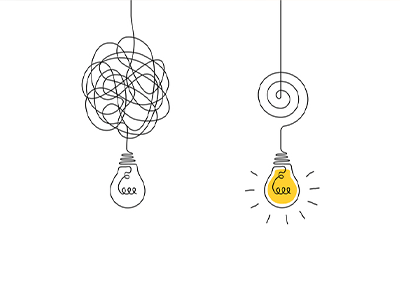EMDR
or
Eye Movement Desensitization Reprocessing

EMDR or Eye Movement Desensitization Reprocessing is a therapeutic modality that promotes healing from the symptoms and emotional distress that are the result of disturbing life experiences.
Research studies have shown that EMDR therapy offers people great benefits much faster than traditional talk therapies. This modality uses bilateral stimulation while processing difficult events, emotions, and beliefs, allowing the mind and body to heal and restore to an improved state of well-being.
Many of our Jupiter Therapists are trained in EMDR, including Dr. Ann Marie Semich, Paola Ardila-Riley, Jessica O’Shea, Liz Solomon, Chris Siggins, Kim Siggins, Shirley Gilbert and Dr. Nancy Smith.
What Is EMDR Therapy?
EMDR therapy was initially developed in 1987 for the treatment of post traumatic stress disorder (PTSD) and is guided by the Adaptive Information Processing model. The goal of EMDR therapy is to help desensitize a person to any memories that can cause anxiety, panic, stress, or pain. EMDR is an individual therapy typically delivered once per week for a total of 6-12 sessions. Although many people benefit from fewer sessions. EMDR helps our clients work through trauma experiences and disturbing memories reducing the impact on their emotions, and their lives.
What Happens During An EMDR Therapy Session?
 During an EMDR therapy program session, the therapist works with the person as they revisit a memory of a negative experience. The therapist guides the person as they reprocess the memory for short periods that can last as little as 30 seconds.
During an EMDR therapy program session, the therapist works with the person as they revisit a memory of a negative experience. The therapist guides the person as they reprocess the memory for short periods that can last as little as 30 seconds.
During EMDR therapy, clinical observations suggest that an accelerated learning process is stimulated by EMDR’s standardized procedures, which incorporate the use of eye movements or other forms of rhythmic left-right (bilateral) stimulation (e.g., tones or taps). As the client briefly focuses on the traumatic memory, while simultaneously experiencing bilateral stimulation (BLS), the vividness and emotion of the memory are reduced.
EMDR therapy uses a structured eight-phase approach that includes:
- Phase 1: History-taking
- Phase 2: Preparing the client
- Phase 3: Assessing the target memory
- Phases 4-7: Processing the memory to adaptive resolution
- Phase 8: Evaluating treatment results
Processing of one specific memory is generally completed within one to three sessions. EMDR therapy differs from other trauma-focused treatments in that it does not include extended exposure to the distressing memory, detailed descriptions of the trauma, challenging of dysfunctional beliefs or homework assignments.
People of different ages and backgrounds have found EMDR helpful in reducing stress and anxiety and boosting overall health and well-being.
Therapists and Psychologists alike are Using EMDR to Help their Clients

For many decades now, we have been seeing great results in our clients with EMDR therapy. EMDR is an evidenced-based therapy, which means it has been scientifically proven with a multitude of research to be affective for overcoming trauma, anxiety, and emotional reactivity. At our Jupiter therapy office, all of our therapists have made EMDR training a priority, for the benefit of their clients.
We realize that when you’re battling trauma and other emotional health issues, you may feel like you can’t escape. Fortunately, that is not true. We can give you the care and support you need to break free from conditions that hold you back.
You don’t have to be trapped by your trauma. With the help of our EMDR therapy program, you can blossom into the person you’ve always wanted to be. To learn more about EMDR, go to the EMDR Institute, Inc.
